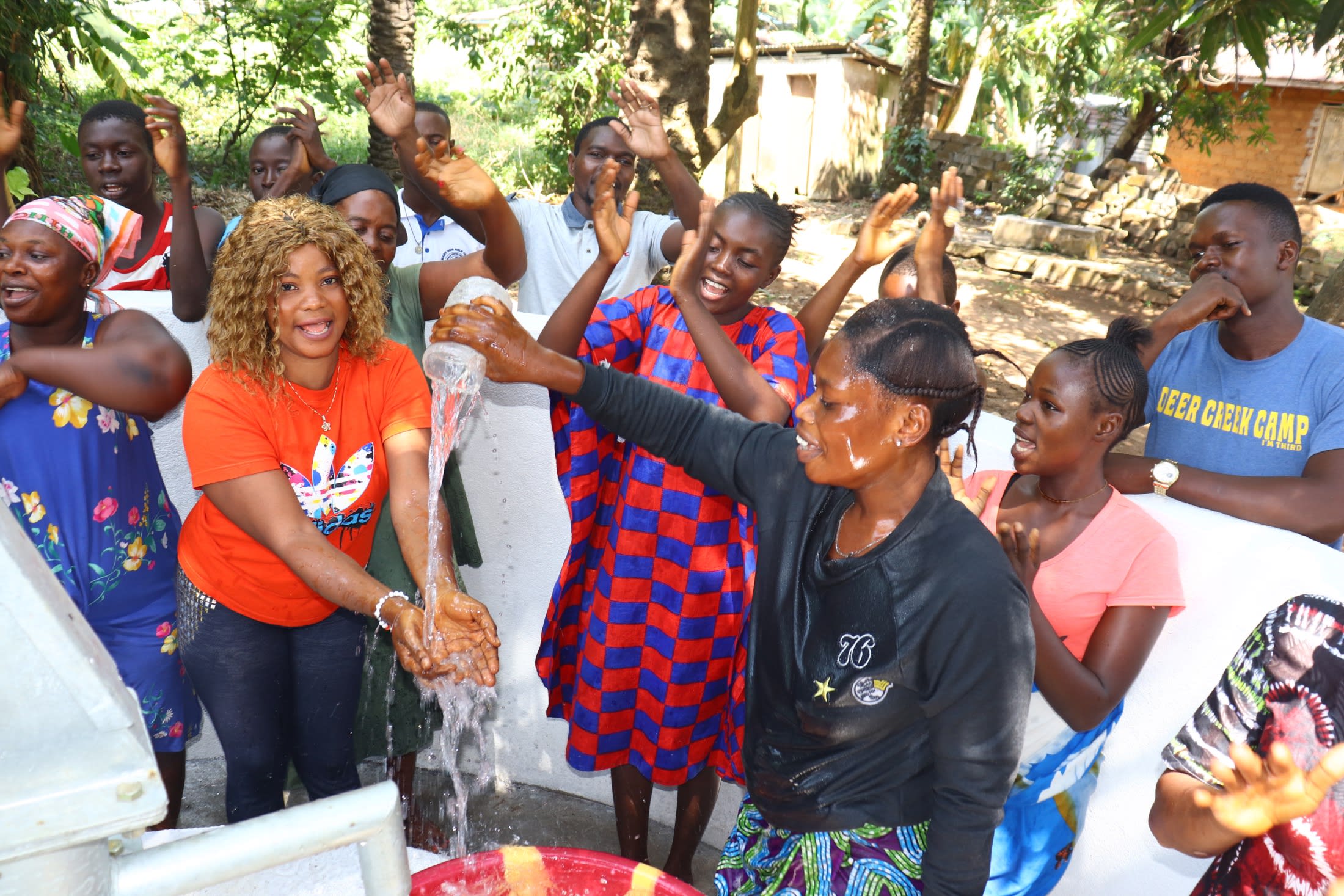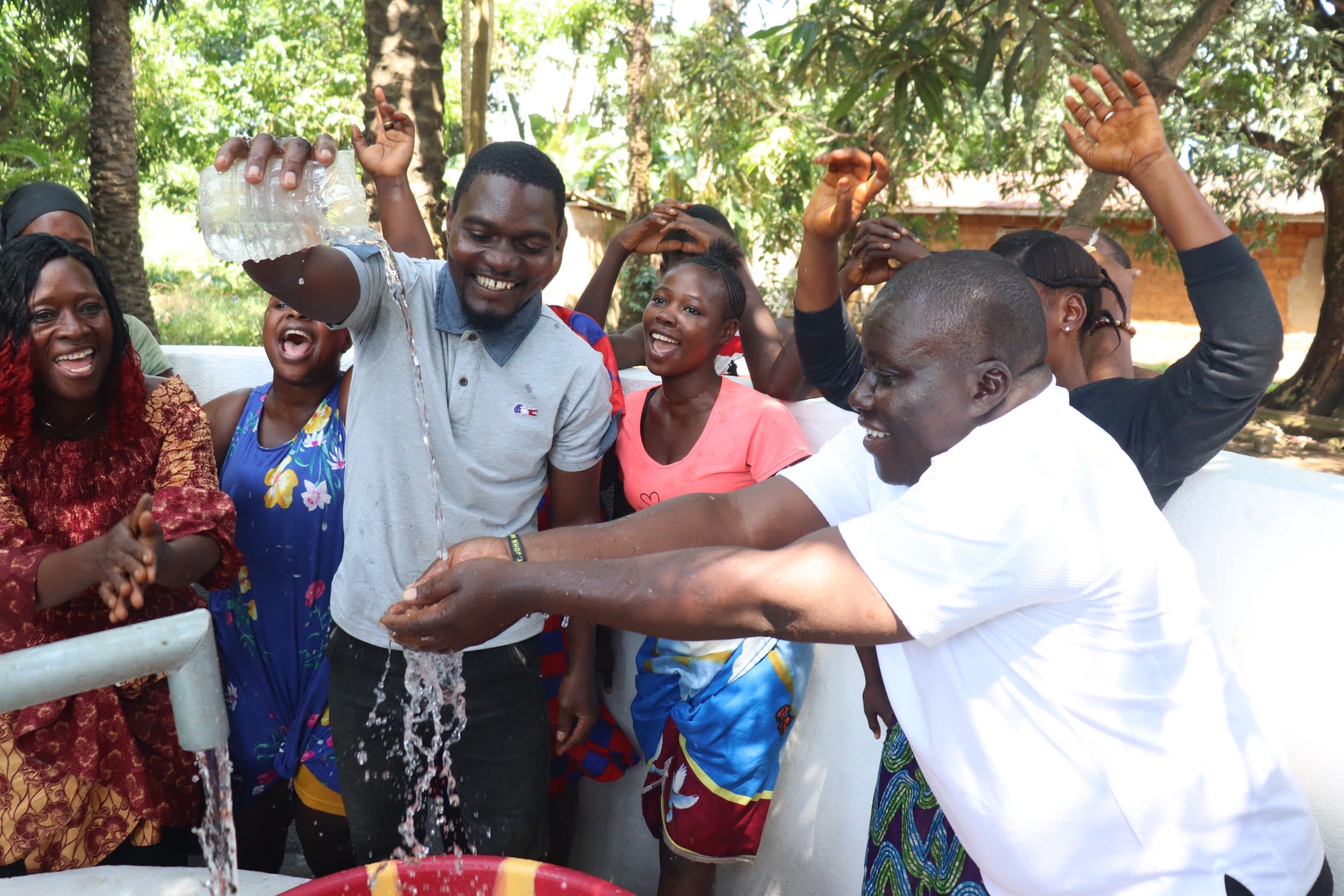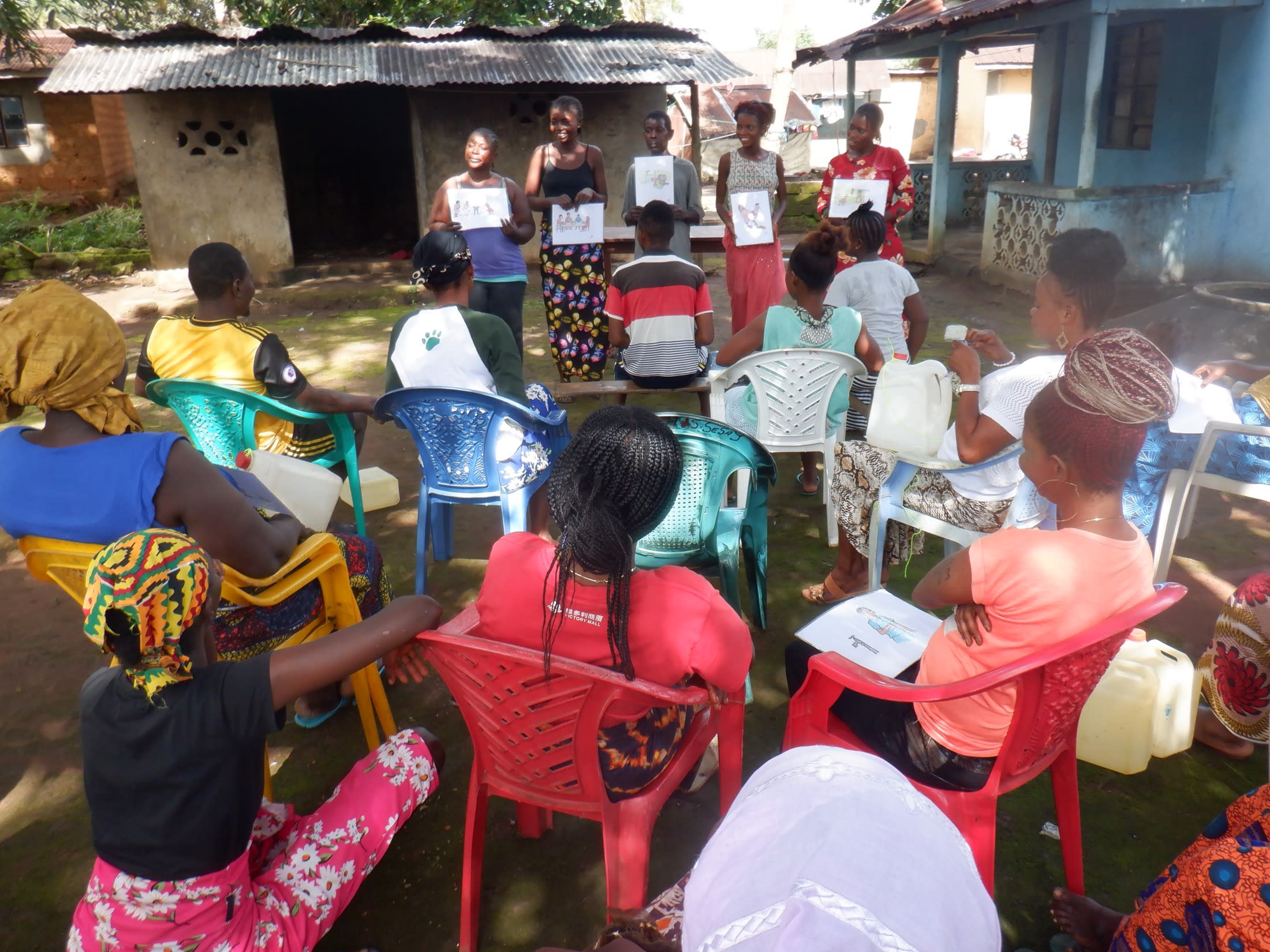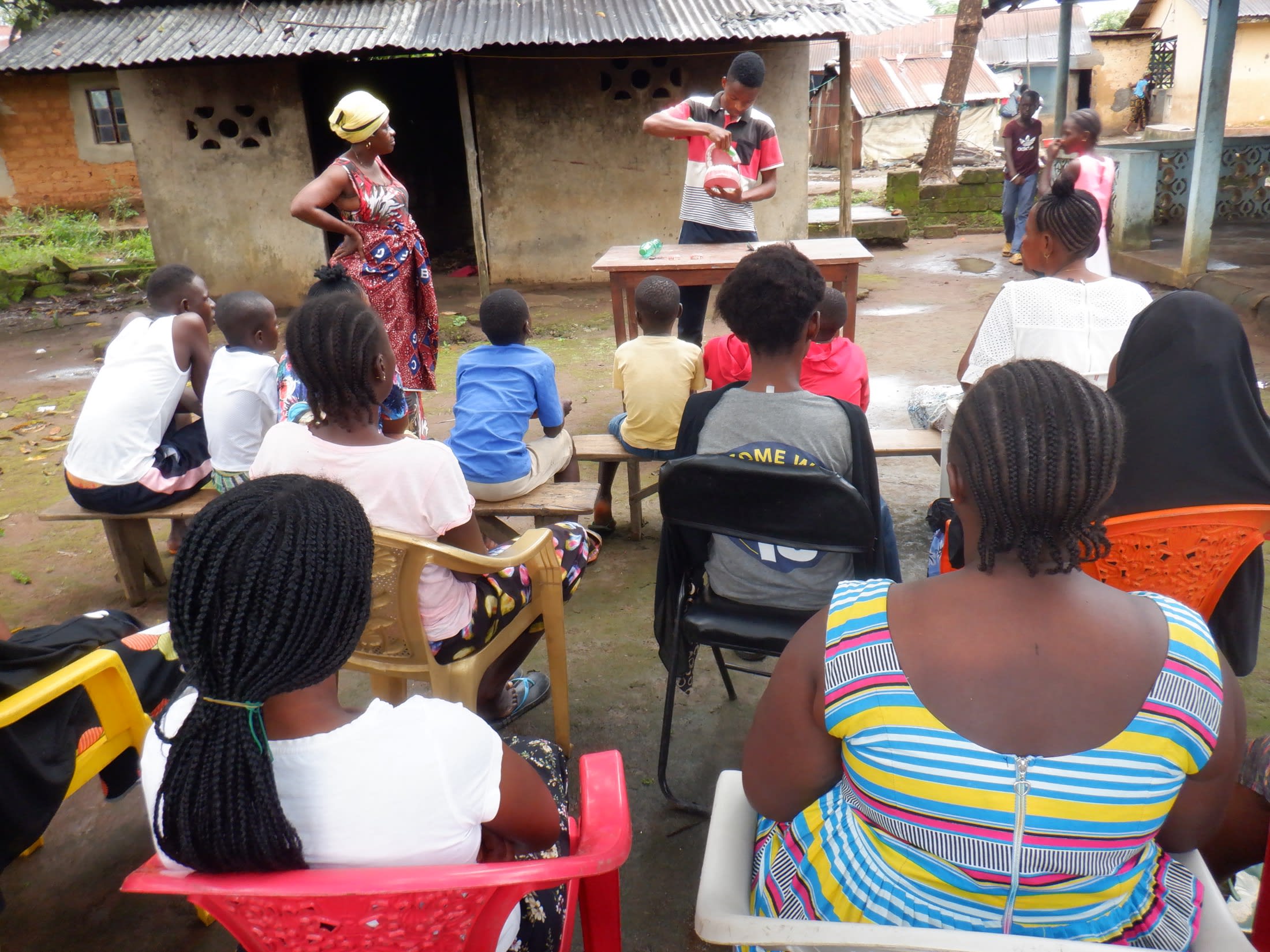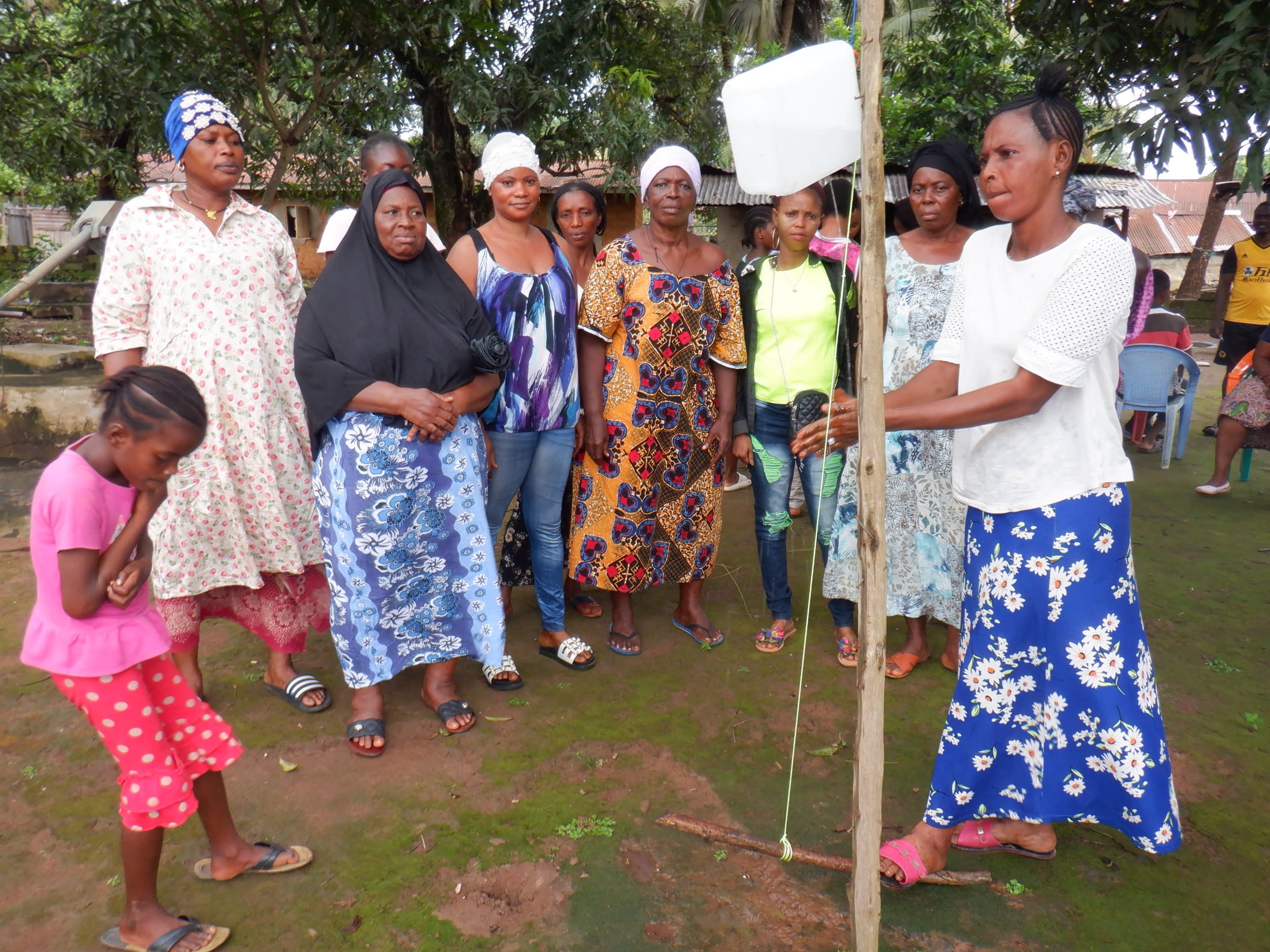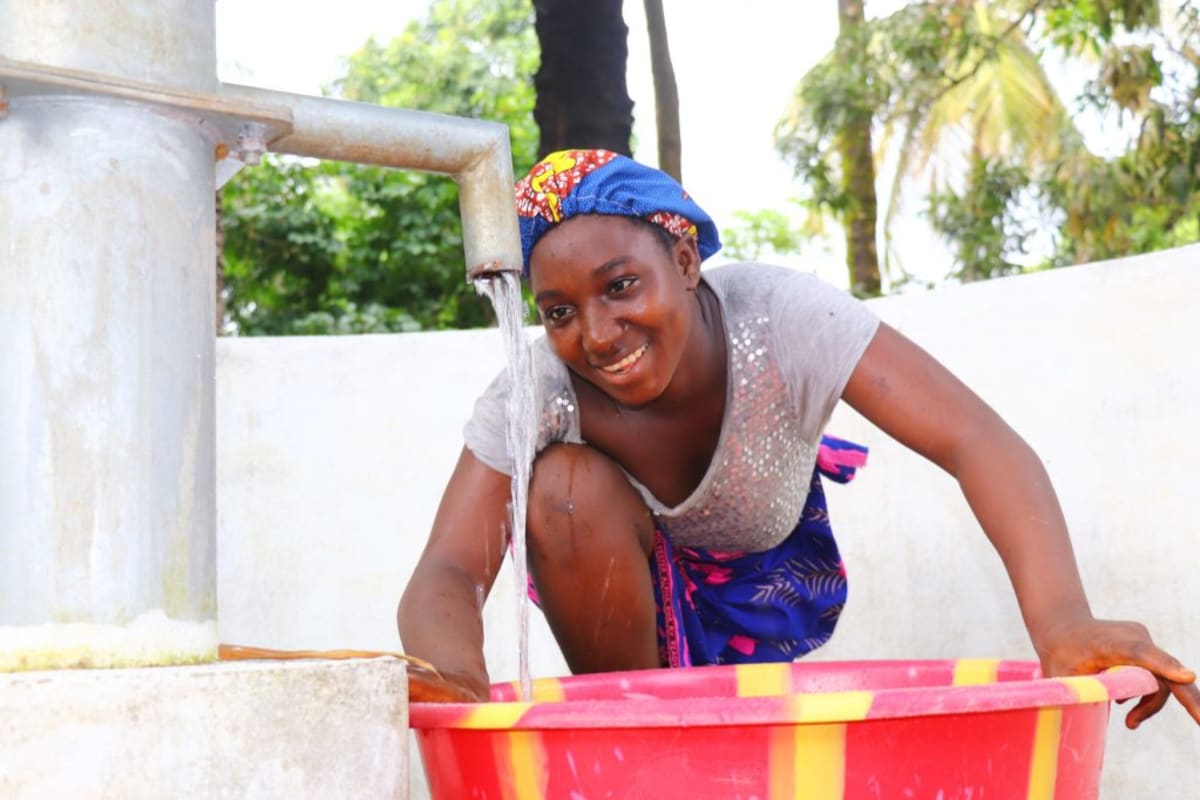For the 251 people in this area of Tintafor, water is scarce, and it seems everyone is scrambling to find water. The few water points they have are experiencing seasonal dryness, or are overcrowded, causing frequent breakdowns and long collection times.
"I need enough water to do my domestic activities every day. It is not easy to fetch a single bucket of water, especially when [our] water well is not providing water. The pump frequently breaks down," said 23-year-old trader Haja Mansaray, shown below collecting water.

Haja admitted that it is too challenging for her to collect enough water to regularly launder her clothes, keep up with her personal hygiene, or steadily make an income. "My business is delayed because of the time I spend fetching water to do all my daily activities," Haja said.
Fifteen-year-old Fatmata K. (shown below) finds the lack of water challenging as a student and as a Muslim. She needs water to drink, wash her uniforms for school, and even more water to perform her daily prayer rituals, but on many days those things are nearly impossible to accomplish.

"Since the water source I had been using in my community got spoiled, I had a lot of constraints as a student. Most of the time, when I wake up late in the morning, before going to the alternate source, I find the place so overcrowded. I had to wait a long time before I could access water. I normally go to school late, which affects my academic work greatly," said Fatmata.
When Fatmata can't find water, she relies on whatever source she can find, but this often means the water she manages to collect is not safe for consumption. As a result, she reported frequently suffering from water-related illnesses like diarrhea, dysentery, and typhoid.
Rehabilitating the well close to the people in this area of Tintafor will hopefully afford them easier and more consistent access to safe, reliable water.
Here’s what we’re going to do about it:
Well Rehabilitation
The well marked for this overhaul is dry for a few months every year and needs major work to supply adequate, clean water to the community year round. The pump will be removed, and a hand auger will be lowered inside and powered by a drill team. This hand auger will allow the team to drill several meters deeper to hit a sufficient water column that will ensure the well supplies water throughout all seasons.
As the team drills, casing will be installed, transforming the bottom of this hand-dug well into a borehole. PVC piping will connect this lower system directly to the pump, a construction that we know will also improve the quality of water.
Once this plan is implemented, everyone within the community will have access to safe drinking water in both quality and quantity, even through the dry months.
Hygiene and Sanitation Training
There will be hygiene and sanitation training sessions offered for three days in a row.
After our visit, the hygiene and sanitation trainer decided it would be best to teach community members how to build a tippy tap (a hand-washing station built with a jerrycan, string, and sticks). They will use these tippy taps for handwashing demonstrations, and will also teach about other tools like dish racks and the importance of properly penning in animals.
These trainings will also strengthen the water user committee that manages and maintains this well. They enforce proper behavior and report to us whenever they need our help solving a serious problem, like a pump breakdown.

 Borehole Well and Hand Pump
Borehole Well and Hand Pump










